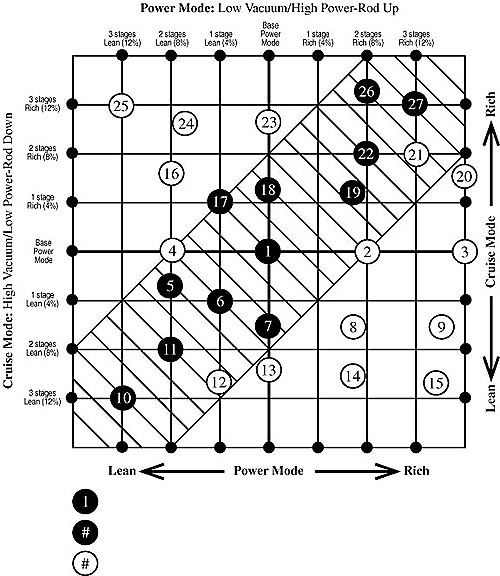|
|
|||||||||||||
|
|||||||||||||
Edelbrock Performer Series Carburetor |
Table of ContentsSection
1 - Theory of Operation
|
||||||||||||||||||||||||||||||||||||||||||||||||||||||||||||||||||||||||||||||||||||||||||||||||||||||||||||||||||||||||||||||||||
|
Section 4 |
|||||||||||||||||||||||||||||||||||||||||||||||||||||||||||||||||||||||||||||||||||||||||||||||||||||||||||||||||||||||||||||||||||
#1404 Calibration Reference Chart / Primary Metering
Step 1: Select the combination of Cruise Mode and Power Mode fuel-metering stages desired for your calibration. Normal calibration changes will be within the gridded diagonal area. That is, Cruise and Power mode changes should be in the same direction (either richer or leaner) and usually by the same amount. Step 2: Find the number that is nearest your desired combination. This is your Calibration Reference Number. Step 3: Go to the next page. Find the Calibration Reference
Number you have just selected in Step 2. Listed will be the Main
Jet and Metering Rod required to achieve the desired fuel metering
for the Primaries.
Secondary MeteringThe factory calibration jet is shown in the center column. For
leaner or richer calibration use the jet # indicated in the
appropriate column.
Main Jet I.D.-All Edelbrock jets have "120-"prefix.
The last three digits minus 300 = actual jet size.
Examples:
|
|||||||||||||||||||||||||||||||||||||||||||||||||||||||||||||||||||||||||||||||||||||||||||||||||||||||||||||||||||||||||||||||||||